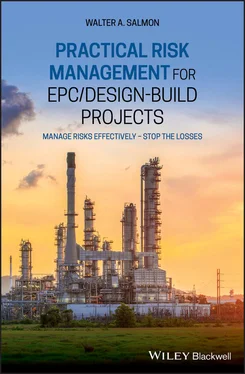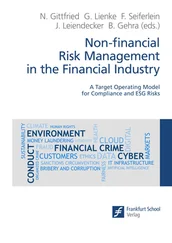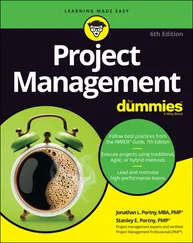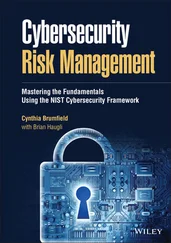There are many different ways for an Employer who wants to have construction work carried out to arrange for the appointment of a Contractor to do the work. However, whether the work is let under a Traditional Contracting arrangement or an EPC/Design-Build arrangement, the Contractor's work will almost certainly involve both procurement and installation/construction work. It will therefore be of no surprise that a great deal of what I have written will quite obviously also apply equally well to non-EPC/Design-Build Contractors, despite the intended focus of this book being on EPC/Design-Build Projects.
Whether or not a Project is conducted under an EPC or Design-Build arrangement, failure to manage the implementation risks properly for a major Project can lead not only to huge financial losses but also to bankruptcy for the Contractor's entire business. Mismanaging a major Project's risk portfolio should therefore be viewed as a gamble too far for most Contractors, and advance planning is therefore vital. Consequently, no matter what type of contractual arrangement the successful bidder will eventually be working under (whether the Traditional Contracting approach or an EPC/Design-Build route), there are certain basic preparatory bidding steps that need to be taken. The following sets out what those steps are, and which are essential if the bid pricing is to stand a good chance of adequately covering all the costs involved for undertaking all the work necessary to complete the Project successfully:
1 Planning how the work will be done through the development of a comprehensive Work Breakdown Structure (WBS) for the Project. Sometimes the starting point might be an outline WBS required/prepared by the Employer's Team and issued with the Invitation to Bid documentation. No matter, the WBS needs to be worked up into a truly meaningful list of all the work activities/elements involved and, under an EPC or Design-Build Project, the Engineering, Procurement and Construction components should each have their own list of work activities/elements clearly identified under those specific headings.
2 Using the completed WBS, the Contractor must then establish the sequence of undertaking the work activities/elements involved, and also determine the length of time needed to deliver the completed work for the entire Project (the Project Schedule). If it is also possible to establish the labour and construction equipment resources required reasonably accurately, then that would be of great benefit, since it would help to give more confidence in both the anticipated Project completion time and the Contractor's bid pricing. However, that is more often than not very difficult to achieve under an EPC/Design-Build Project, due primarily to the lack of detailed design information available from which to measure the physical work quantities that will be required for the completed Project.
3 Having prepared the WBS and established what the Project Schedule looks like, the Contractor must then conduct a preliminary risk analysis. The aim should be to establish what the major risks are that, if not controlled adequately, would have the potential to cause major problems and thereby stop the Project from being as successful as it could be. Those risks should then be set down in a preliminary Project Main Risks Register, alongside which suitable risk mitigation measures should be included (wherever it is considered possible/feasible to achieve that), aimed at preventing those risks from materialising.
4 The final essential ingredient in submitting a worthwhile, comprehensive bid is for the Contractor to prepare an outline Project Execution Plan (PEP) that incorporates all the findings from the WBS, the Project Schedule and the Project Main Risks Register. A properly prepared and well thought out PEP is, in essence, the storyline for how the Project will be undertaken. If written competently, the PEP would allow the Contractor's Project Implementation Team to form a very clear picture as to what the most effective management set-up ought to be. That too would give the Contractor added confidence about the adequacy of the bid pricing.
All of the above topics, common to all construction Projects (EPC/Design-Build or otherwise), are dealt with in far more detail in the following chapters of this book, along with advice as to (i) what to look out for when compiling the necessary information and documentation, (ii) what things can go wrong, and (iii) how to avoid such problems occurring.
1 1International Construction Measurement Standards Coalition (2017). International Construction Measurement Standards – Global Consistency in Presenting Construction Costs, 1e. International Construction Measurement Standards Coalition, p. 7.
2 2Construction Executive (16 April 2014). Understanding D&O liability insurance coverage. www.constructionexec.com/article/understanding-do-liability-insurance-coverage(accessed 21 March 2018).
3 3Strategic Risk (15 October 2018). Carillion collapse: the lessons learnt in supply chain risk. Newsquest Specialist Media Limited. www.strategic-risk-europe.com/carillion-collapse-the-lessons-learnt-in-supply-chain-risk/1428293.article(accessed 16 October 2018).
4 4I consider that a good starting point would be the APM (Association for Project Management) publication ‘Project Risk Analysis and Management Guide’ (PRAM Guide).
5 5Fédération Internationale des Ingénieurs-Conseils (FIDIC) (2017). Conditions of Contract for EPC Turnkey Projects, 2e. Fédération Internationale des Ingénieurs-Conseils/International Federation of Consulting Engineers.
6 6Banaszak J., Palter R. and Parsons M. (March 2017). Stopping the insanity: Three ways to improve contractor-owner relationships on capital Projects. www.mckinsey.com/industries/capital-Projects-and-infrastructure/our-insights(accessed January 2018).
7 7Banik G.C. and Hannan F. (2008). Specialty Contractors' Perspectives on Risk Importance and Allocation of Design-Build Contracts – Abstract (School of Architecture, CET and Construction Southern Polytechnic State University).
8 8Association for Project Management. APM PRAM Guide. Association for Project Management, p. 98: ‘Risks are more likely to be acted on if responsibility is allocated to individuals’.
9 9FIDIC – Fédération Internationale des Ingénieurs-Conseils.
10 10Ibid.
11 11Published by ICE Publishing (part of the Institution of Civil Engineers).
12 12Published by the Institution of Chemical Engineers.
13 13Such as, but by no means limited to, Hudson's Building and Engineering Contracts (by Hudson A.A. and Wallace I.N.D.) and also Construction Contracts - Law and Management (by Hughes W., Champion R. and Murdoch J.).
14 14Billows J., Kroll K., Pikul P . et al. (August 2018). Capital Project value improvement in the 21st century: Trillions of dollars in the offing. www.mckinsey.com/industries/capital-Projects-and-infrastructure/our-insights/capital-Project-value-improvement-in-the-21st-century-trillions-of-dollars-in-the-offing(accessed 05 September 2018).
15 15MBA Knowledge Base (5 March 2012). Build Operate Transfer (BOT) Model. www.mbaknol.com/Project-management/build-operate-transfer-bot-model(accessed 31 July 2018).
16 16Hyari K. and Kandil A (2009). Validity of Feasibility Studies for Infrastructure Construction Projects. Jordan Journal of Civil Engineering, 3(1).
Chapter 2 Construction Project Implementation Routes
2.1 Different Approaches
I freely acknowledge that there are many different ways to approach the implementation of construction Projects that will result in getting a proposed facility constructed (successfully or otherwise). However, since the focus of this book is on EPC and Design-Build Projects, I only intend to contrast those two procurement routes with what is known as the Traditional Contracting route. Also, in order to clear up any confusion that may exist in the reader's mind about the relationship between EPC Projects and the construction procurement route known as EPCM (Engineering, Procurement and Construction Management), within Section 2.5 2.5(EPCM Approach) I also briefly touch on that particular implementation method.
Читать дальше












